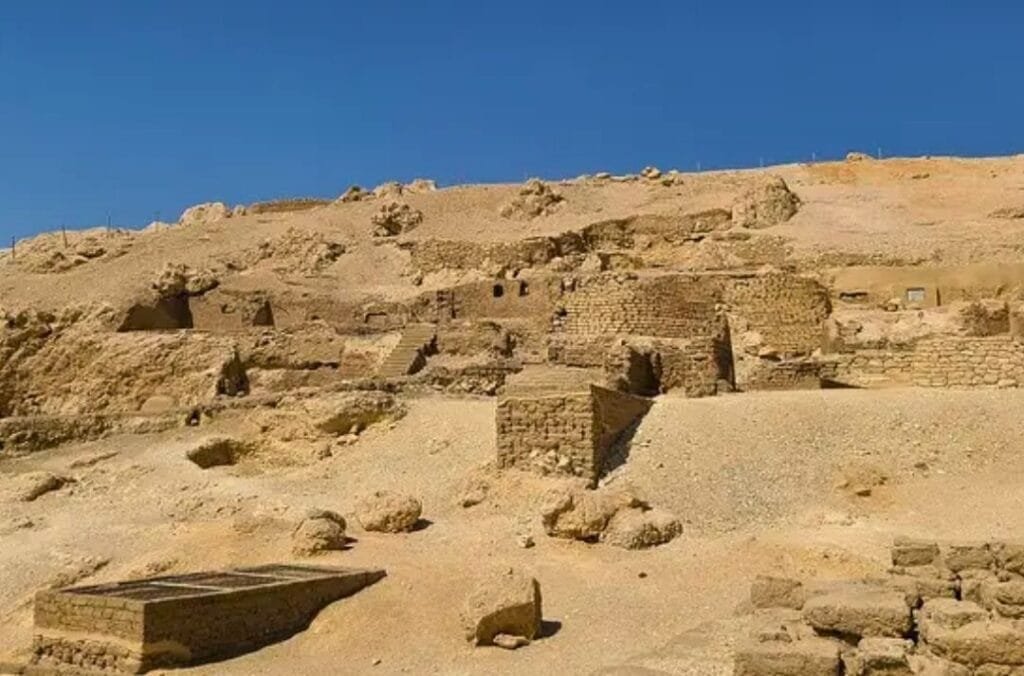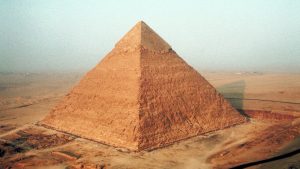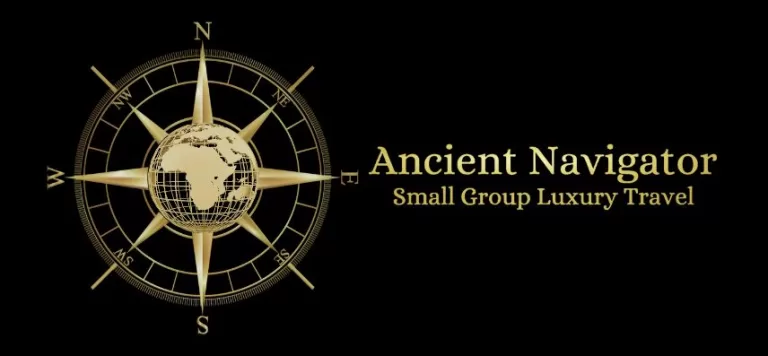New Kingdom Tombs Found in Luxor Reveal Shocking Secrets
Table of Contents
What If the Afterlife Was More Luxurious Than Life Itself?
Imagine walking into a chamber sealed for more than 3,000 years—where the walls still whisper secrets of power, betrayal, devotion, and divine ambition. Where pigment on stone hasn’t faded, and the air still hums with the energy of ancient ritual. This isn’t Hollywood. This isn’t fantasy. This is Luxor. And this is real.
Earlier this year, Egyptian archaeologists made a discovery that isn’t just newsworthy—it’s history-rewriting. In the hallowed necropolis of Dra’ Abu el-Naga, a stone’s throw from the Valley of the Kings, three previously unknown tombs were unearthed. The tombs of Amenemopet, Paki, and a mysteriously named Is are now out in the open. But what’s inside? Well, it just might rattle your entire understanding of the New Kingdom.
TL;DR (But Don't You Dare Stop Here)
Three stunning tombs from Egypt’s New Kingdom have been uncovered in Luxor’s Dra’ Abu el-Naga necropolis. Each tomb belongs to a high-ranking figure—Amenemopet, Paki, and Is—and contains detailed inscriptions, rare sacrificial murals, and architectural details that challenge previously accepted theories about burial customs, priestly influence, and afterlife beliefs. This isn’t just another dig; it’s a jackpot find. And if you care about history, culture, or just understanding the deeper roots of human civilization, this is a moment you can’t afford to overlook.
Key Takeaways
The tombs of Amenemopet, Paki, and Is offer a rare look into elite life and death during Egypt’s New Kingdom. These aren’t just burial plots. They’re three-dimensional historical manuscripts revealing how the elite lived, worshipped, and prepared for eternity.
The artwork inside includes never-before-seen sacrificial rituals and cosmic symbology. This kind of imagery reframes academic understanding of Theban religious practices and adds crucial data to New Kingdom theology.
Architectural features suggest evolving burial strategies among Egypt’s elite. From shaft placement to false door innovations, these tombs represent a fusion of art, science, and sacred design.
Luxor’s tourism economy is poised for a major boost. With these new discoveries come renewed global interest, media attention, and high-end travel opportunities for culturally-savvy explorers.
This is your chance to see history unfold. The tombs are expected to open to guided, limited-access tours soon—and AncientNavigator.com is perfectly positioned to take you there first.

The Sacred Ground of Dra' Abu el-Naga
To understand what makes this discovery so significant, you need to know where it happened. Dra’ Abu el-Naga is not just a hill of dirt in Upper Egypt. It’s a ritual landscape soaked in spiritual intensity. This necropolis was one of the main burial grounds for nobles and priests during the 17th to 20th Dynasties. When tombs are uncovered here, they’re not casual finds—they are high-stakes puzzle pieces in the grand narrative of Egyptian civilization.
Over the last century, Dra’ Abu el-Naga has given up glimpses of greatness: priestly archives, painted coffins, fragments of courtly drama. But nothing quite like this. What makes the latest find exceptional is not just the age of the tombs, but the completeness and quality of what’s inside them.
Archaeologists weren’t digging blind. They were following whispers—ancient records, anomalous ground-penetrating radar images, and the intuition that something grand still lay beneath the sands. What they found, however, surpassed even their boldest expectations.
Who Were Amenemopet, Paki, and Is?
Amenemopet, the most decorated of the trio, appears to have been an elite administrator or priest serving directly under Pharaoh Amenhotep III. His tomb is filled with inscriptions boasting of divine duties, possibly linked to temple construction or sacred inventory control. The hieroglyphs framing his burial niche make one thing clear: this man considered himself chosen by the gods.
Paki’s tomb is more enigmatic. The title etched above his resting place reads, “Overseer of Seal-Bearers.” This suggests a role steeped in bureaucracy and trust—likely connected to the kingdom’s treasury or record-keeping institutions. His tomb art includes scenes of grain offerings and solar deities, a combination rarely seen together, which has already set Egyptologists into a frenzy of reevaluation.
And then there is Is. Just “Is.” A name as cryptic as it is arresting. Unlike his companions, Is left behind fewer personal titles, but his tomb compensates with unmatched artistic complexity. The wall murals in his chamber tell cosmic stories—the voyage of Ra, the judgment of the heart, and scenes of celestial boats navigating the Duat. Experts now believe Is may have been a theological scribe or mystic.
Art as Resurrection: Inscriptions and Sacrificial Scenes
Step inside these tombs, and you don’t just see history. You feel it breathing on your neck.
The inscriptions here aren’t decorative; they are instructional. Texts meticulously laid out to guide the deceased through the perils of the underworld and into eternal paradise. Many of these inscriptions are versions of the Book of the Dead, but with regional adaptations and, in some cases, entirely new lines of theological thought. That’s a big deal.
Then there are the sacrificial scenes. These aren’t simple depictions of food offerings. We’re talking full ritual ceremonies: priests in elaborate vestments, animal sacrifices with precise blood-letting techniques, libation bowls that correspond to lunar cycles. The artistic quality is staggering, and the narrative flow of the murals is more cinematic than static.
This discovery is rewriting what we know about how the Theban elite visualized the afterlife. It wasn’t just about preservation. It was about power, passage, and alignment with celestial cycles. These people weren’t dying. They were ascending.
Architectural Masterpieces in Stone
Modern architects could learn a thing or two from the builders of these tombs.
Each structure shows an evolving strategy for manipulating space, symbolism, and spiritual function. Amenemopet’s tomb includes false doors that open to nothing in the material world—but everything in the spiritual one. These served as portals for his “Ka,” or life force, to move freely between worlds.
Paki’s tomb employs a curious double-shaft technique. Two vertical passages plunge into the earth, but only one leads to the sarcophagus. The other appears to be a decoy, possibly to confuse tomb robbers or to symbolize a duality of paths—the righteous and the damned.
Is’s tomb features the earliest known use of what experts are calling a “resonance chamber.” A narrow room with curved walls that may have been used for chanting or acoustic ceremony. Sound testing is currently underway, but early results show that chants held in this chamber reverberate at frequencies tied to ancient Egyptian musical scales.
These aren’t just burial sites. They are sacred machines engineered to launch the soul into eternity.

Tourism, Discovery, and the Rebirth of Luxor
Egypt has long been a magnet for tourists, but the discovery of these tombs is about to supercharge Luxor’s appeal to a new wave of high-end travelers.
Already, international media are lighting up with the news. Journalists from National Geographic, The Guardian, and France24 have converged on the site. The Egyptian Ministry of Tourism has announced plans to preserve and eventually open the tombs to limited-access guided tours. Not the cattle-call kind. We’re talking velvet-rope, expert-led, deeply immersive experiences for those who crave more than just a snapshot.
For the savvy traveler, this is a once-in-a-lifetime moment. To witness history being uncovered, not in a museum behind glass, but right where it happened—amid the dust, the light, the silence of the sacred. And AncientNavigator.com is not just watching from the sidelines. We’re paving the way.
Our curated journeys offer more than sightseeing. We provide historical context, private access, and local partnerships that bring Egypt’s past vividly into your present. If you’re reading this and feel the pull of the Nile, trust that it’s not random. It’s ancestral.
The Final Word: Why This Matters Now
History is not a static thing. It’s living, evolving, and occasionally, screaming to be heard. The tombs of Amenemopet, Paki, and Is are more than archaeological finds. They are messages from the past, sent with urgency to the future. To us.
In an age of distraction, depth is the real luxury. And understanding the complexity of ancient Egyptian life, religion, and engineering doesn’t just make you smarter. It makes you more human.
If you’re serious about experiencing the wonders of the ancient world without the filter of mass tourism, now is the time to act.
Ready to Walk Through Time?
Let AncientNavigator.com take you there—beyond the brochure, behind the curtain, and into the beating heart of the world’s most magnificent civilization.
Join us. Step into the tomb. Step into eternity.
Join our Email List
About the Author

James
A passionate traveler and writer who loves exploring the world, discovering new places, savoring unique foods, and connecting with fascinating people. Through their writings, James shares personal experiences and stories from every corner of the globe, with the hope that others can one day embark on these adventures for themselves. Whether it's about a hidden gem of a destination or a culinary delight, James's goal is to inspire and spark a sense of wanderlust in their readers.

James
A passionate traveler and writer who loves exploring the world, discovering new places, savoring unique foods, and connecting with fascinating people. Through their writings, James shares personal experiences and stories from every corner of the globe, with the hope that others can one day embark on these adventures for themselves. Whether it's about a hidden gem of a destination or a culinary delight, James's goal is to inspire and spark a sense of wanderlust in their readers.
Past Blog Posts

Planning a Trip to Egypt? Here’s How Long You Need
Think you can “do” Egypt in 3 days? Think again. From ancient tombs to Nile-side secrets, this guide reveals why the magic of Egypt demands more than a layover—and shows you exactly how many days you really need to make it unforgettable. Don’t book that flight until you read this.

How Far Does $100 Go in Egypt?
Think $100 won’t get you far? In Egypt, it’s a game-changer. From luxury hotels to mouthwatering meals and ancient wonders, see how far your dollar really goes. This guide breaks down real costs, insider tips, and jaw-dropping experiences you can afford—without breaking the bank.

Private Egyptologist Tours: Unlock Egypt’s Hidden Secrets in Luxury
Step beyond the velvet ropes of Egypt’s most iconic sites. With a private Egyptologist as your guide, you’ll uncover hidden chambers, untold stories, and experience ancient wonders far from the tourist crowds. This is discovery at its most exclusive—where history meets luxury.

















